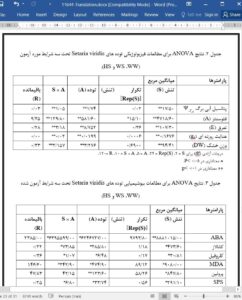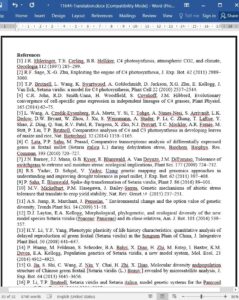Abstract
The emerging model Setaria viridis with its C4 photosynthesis and adaptation to hot and dry locations is a promising system to investigate water use and abiotic stress tolerance. We investigated the physiological plasticity of six S. viridis natural accessions that originated from different regions of the world under normal conditions and conditions of water-deficit stress and high temperatures. Accessions Zha-1, A10.1 and Ula-1 showed significantly higher leaf water potential (Ψleaf), photosynthesis (A), transpiration (E), and stomatal conductance (gs) rates compared to Ast-1, Aba-1 and Sha-1 when grown under stress conditions. Expression analysis of genes associated with C4 photosynthesis, aquaporins, ABA biosynthesis and signaling including genes involved in stress revealed an increased sensitivity of Ast-1, Aba-1 and Sha-1 to stresses. Correlation analysis of gene expression data with physiological and biochemical changes characterized A10.1 and Ast-1 as two extreme tolerant and sensitive accessions originated from United States and Azerbaijan under water-deficit and heat stress, respectively. Although preliminary, our study demonstrated the plasticity of S. viridis accessions under stress, and allows the identification of tolerant and sensitive accessions that could be use to study the mechanisms associated with stress tolerance and to characterize of the regulatory networks involved in C4 grasses.
1. Introduction
Monocot C4 cereal grains and grasses belonging to the Panicoideae subfamily comprise crops that are major sources of food and feedstock, such as maize (Zea mays), sorghum (Sorghum bicolor), sugarcane (Saccharum officinarum), pearl millet (Pennisetum glaucum), switchgrass (Panicum virgatum), etc. Because most C4 plants are well adapted to high light intensities, elevated temperatures and relatively poor soils, they have attracted significant interest and are becoming the focus of intense research [1,2]. Although, considerable advancement towards the understanding of the molecular and biochemical pathways associated with C4 metabolism [3–5] and the relative tolerance of C4 crops to abiotic stress has been made [6–8], the progress of these researches has been hampered because of their big size, large and/or polyploid genome and long generation times. Setaria viridis has a C4 metabolism, small genome (approximately 510 Mb), short life cycle and simple growth requirements [3]. Moreover, the recent demonstration of a fast and simple spike-dip-mediated genetic transformation[9]makes S. viridis anidealmodelplantfor the study of abiotic stress in Panicoideae crops.











